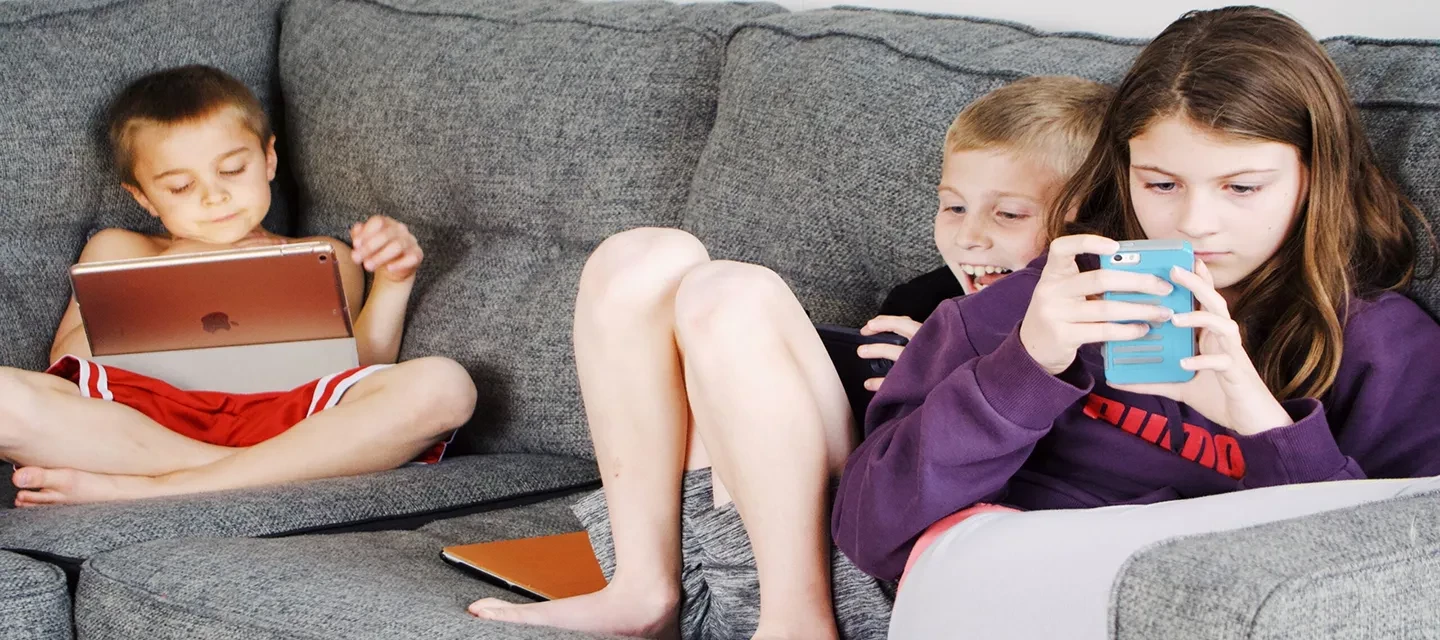Sub total: 0.00 BGN (0.00 €)
In today's high-tech world, screens from TVs, phones, tablets, and laptops are an inseparable part of our daily lives. This applies especially to the youngest among us. From a very early age, children are exposed to the digital world, full of bright images, moving visuals, and captivating sounds that easily capture their attention.
Although technology offers many opportunities for learning and entertainment, excessive use can negatively affect development—especially during the first years of life when the brain is developing rapidly. In this article, we’ll explore what experts say on the topic, what the potential risks are, how to recognize signs of overuse, and most importantly – how to build a healthy balance at home.
How Much Screen Time Is Acceptable According to Experts?
The American Academy of Child and Adolescent Psychiatry recommends:
- Children under 18 months: no screen exposure, except for short video calls with close relatives;
- Children between 18 and 24 months: high-quality content can be introduced, such as educational programs, but only with active parental involvement;
- Children between 2 and 5 years: maximum of one hour per day of high-quality content, with mandatory co-viewing and simultaneous alternative activities;
- Children over 6 years: clear boundaries aligned with sleep, physical activity, and family time. Screens should be avoided during meals, conversations, or outings.
These guidelines are not meant to prohibit technology but to help parents establish a meaningful, balanced, and supportive routine.
What Are the Risks of Excessive Screen Use?
Prolonged exposure to digital devices at a young age may lead to:
- Delayed speech development – lack of live contact and conversation limits opportunities to learn new words and structures. Studies show that every additional hour of daily screen time increases the risk of speech delay by 49%. Alarming, isn’t it?
- Impaired attention and concentration – lack of interest in school activities, family conversations, or social interaction. The child becomes distracted and confused, which can lead to learning difficulties;
- Increased impulsivity – the frequent change of images and sounds overloads the nervous system and can cause irritability and hyperactivity;
- Sleep difficulties – blue light suppresses and slows the production of melatonin (the sleep hormone), leading to trouble falling asleep and frequent night waking;
- Socialization issues – less time interacting with peers and family means less development of emotional and social intelligence;
- Increased risk of obesity – lack of physical activity and too much screen time can reduce motor skill development and muscle strength, increasing the risk of overweight;
- Deterioration of vision – the blue light emitted by screens harms the eyes, especially the retina, increasing the risk of myopia.
Can Screens Cause Addiction?
Yes, especially in younger children whose brains are still developing and seeking strong stimuli. Screens offer instant gratification: bright colors, sounds, instant responses. This activates the brain’s pleasure centers and can form a habit similar to addiction. The brain begins to seek only quick, superficial stimuli and avoids activities that require concentration, effort, or interaction with others.
Over time, the child may start preferring the screen over all other forms of activity, exhibit dependent behavior when the device is taken away, and lose interest in the real world. That’s why it’s so important to introduce timely boundaries—before screen use becomes the main source of pleasure and escape from reality.
How to Recognize Signs of Screen Addiction?
It’s not just about the amount of screen time, but how the child reacts when the screen is taken away. Watch out for the following signs:
- Irritability, aggression, or crying when the device is turned off;
- Unwillingness to engage in other activities like playing, walking, or communicating with others;
- Frequent requests for the phone/tablet and disinterest in everything else;
- Trouble falling asleep and increased anxiety;
- Regression in speech or emotional development.
If you recognize more than two of these symptoms, we recommend consulting a specialist who can guide you on the next steps to take.
What Can We Do to Build a Healthy Digital Rhythm?
1. Be a Role Model
Children mimic adult behavior. If you’re constantly on your phone, you can’t expect something different from them. Establish screen-free family rituals such as reading, board games, drawing, walking, or playing in the park.
2. Set Clear Rules and Boundaries
Create clear rules and a schedule for when and under what conditions devices can be used. Balance is key to happiness and peace—so don’t be too strict.
3. Choose Content Together
Watch educational videos together, ask questions, explain new words. This turns passive viewing into active learning.
4. Encourage Physical and Sensory Activities
After screen time, offer time for movement—outdoors or indoors. Outdoor games, finger painting, playdough, water, and sand are great ways to balance the digital with the real and spend quality family time.
5. Use Educational Toys
They not only develop fine motor skills but also naturally engage attention without the need for sound or light. For example, Little Fingers’ sensory toys are a great alternative. Developed using the Montessori method, they stimulate creativity and encourage independent play in a fun and beneficial way.
Balance, Not Strict Prohibition
In the digital age, fully avoiding screens is nearly impossible—and unnecessary. The real question is not if, but how children use screens in a way that doesn’t hinder their development. The key is a conscious parenting approach: clear rules, shared screen time, alternative activities, and a strong personal example. Remember—children learn more from what we do than from what we say.




